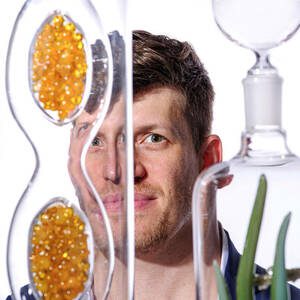Plastic Containers Can Contain PFAS and It’s Getting Into Food
Researchers at the University of Notre Dame are adding to their list of consumer products that contain PFAS (per- and polyfluoroalkyl substances), a toxic class of fluorine compounds known as “forever chemicals.”

In a new study published in Environmental Science and Technology Letters, fluorinated high-density polyethylene (HDPE) plastic containers — used for household cleaners, pesticides, personal care products and, potentially, food packaging — tested positive for PFAS. Following a report conducted by the EPA that demonstrated this type of container contributed high levels of PFAS to a pesticide, this research demonstrates the first measurement of the ability of PFAS to leach from the containers into food as well as the effect of temperature on the leaching process.
Results also showed the PFAS were capable of migrating from the fluorinated containers into food, resulting in a direct route of significant exposure to the hazardous chemicals, which have been linked to several health issues including prostate, kidney and testicular cancers, low birth weight, immunotoxicity and thyroid disease.
“Not only did we measure significant concentrations of PFAS in these containers, we can estimate the PFAS that were leaching off creating a direct path of exposure,” said Graham Peaslee, professor of physics in the Department of Physics and Astronomy at Notre Dame and an author of the study.
It’s important to note that these types of containers are not intended for food storage, but there is nothing preventing them from being used for food storage at the moment. Although not all HDPE plastic is fluorinated, the researchers noted, it’s often impossible for a consumer to know whether a container has had that treatment. And indeed, Peaslee added, if substances like pesticides are stored in these containers, and then are used on agricultural crops, these same PFAS will get into human food sources that way.
In 2021 the EPA announced its PFAS Strategic Roadmap — promising to act on widespread exposure to PFAS. The plan includes developing a more comprehensive understanding of the health and environmental effects of PFAS exposure, preventing further contamination of air, land and water and addressing the need for cleanup of PFAS already in the environment.
PFAS is often used in association with stain- or water-resistant products. For the study, Peaslee, an affiliate of the Environmental Change Initiative, and graduate student Heather Whitehead tested HDPE containers that were treated with fluorine to create a thin layer of a fluoropolymer, as a means to impart chemical resistance and improve container performance over long storage periods. While these materials generally stay in the container wall, the manufacturing process can generate lots of smaller PFAS molecules, which are not polymers. Experiments were designed to measure the ability of these chemicals to migrate from the container to samples of different foods and solvents.
Analysis of the containers found parts-per-billion levels of PFAS that could migrate into both solvents and food matrices in as little as one week.
“We measured concentrations of PFOA that significantly exceeded the limit set by the EPA’s 2022 Health Advisory Limits,” said Peaslee. “Now, consider that not only do we know that the chemicals are migrating into the substances stored in them, but that the containers themselves work their way back into the environment through landfills. PFAS doesn’t biodegrade. It doesn’t go away. Once these chemicals are used, they get into the groundwater, they get into our biological systems, and they cause significant health problems.”
Peaslee and Whitehead measured PFAS concentrations in olive oil, ketchup and mayonnaise that had been in contact with the fluorinated containers for seven days at various temperatures. Based on the amount found in the different food samples, the study estimates enough PFAS could be ingested through food stored in the containers to be a significant risk of exposure.
The containers are the latest products in a long list of those tested by Peaslee and his lab at Notre Dame, including cosmetics, firefighting gear, school uniforms and fast food wrappers.
Contact: Jessica Sieff, assistant director of media relations, 574-631-3933, [email protected]
Originally published by Jessica Sieff at news.nd.edu on March 07, 2023.
Posted In: ECI Update
March 7, 2023
More Like This
Related PostsLet your curiosity roam! If you enjoyed the insights here, we think you might enjoy discovering the following publications.





